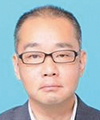 |
|||
|
|
|||
|
Feature Articles: Reducing the Environmental Burden of ICT Services Vol. 13, No. 3, pp. 30–33, Mar. 2015. https://doi.org/10.53829/ntr201503fa5 Efforts to Improve Energy Efficiency of Network Service SystemAbstractNTT Network Service Systems Laboratories is developing network architecture and supporting technologies towards a future network that will enable a service-oriented platform and the creation of new value along with the Hikari Collaboration Model. This article describes our efforts in improving the energy efficiency of network service systems such as routers and servers. Keywords: telecommunications carrier network, network service system, energy efficiency 1. IntroductionIn 2014, NTT announced it would shift its business model to provide the world’s first full-scale wholesaling of a fiber access service in order to stimulate the Japanese ICT (information and communication technology) market [1]. To accelerate the evolution of network and operation technologies to support the new business model, NTT Network Service Systems Laboratories has been carrying out research and development (R&D) towards achieving a service-oriented network in which network resources and functions are modularized in order to provide them quickly and flexibly according to a service player’s request. Building on the concept of the service-oriented network, we focus here on discussing the future network, which is intended to create new value in various ways, to provide network functions to meet diverse needs, and to provide a social infrastructure that is secure, stable, and economical. The objectives of the future network are to reduce capital expenditures (CAPEX) by drastically simplifying the network, and to reduce operating expenses (OPEX) by introducing virtualization for more flexible and efficient use of resources through integration of advanced operations across the entire network (Fig. 1). We are investigating network architectures and developing support technologies in order to achieve these goals. We are also researching system architectures of network service systems that increase energy efficiency.
In this article, we describe our work on reducing power consumption for the transport network system, server system, and operation system. 2. Transport network systemsWe aim to achieve a 50% reduction in power consumption in the transport network system through efforts focused on each part of the network. For link systems, we are working on energy-efficient transmission methods to support a future increase in network capacity, and on a network control method that makes use of equipment with low energy consumption. For the core network, we are investigating terabit-class optical transport methods that can reduce the power consumption per bit under high-volume traffic by combining high-density wavelength path multiplexing with the use of energy-efficient devices. For metro networks, standardization is moving forward for short- to medium-distance optical transmission methods that are expected to be used with devices that have higher energy efficiency than those used for long-distance optical transmission. Our objective is to establish network control schemes that can reduce power consumption by using such energy-efficient transmission methods. We are considering two steps to reduce the cost and power consumption of packet forwarding systems. The first step is a drastic network simplification. We aim to aggregate the functions and shift them towards the network core. In the future network, we aim to develop large capacity edge routers that can accommodate more subscribers in order to reduce the total number of edge routers. In the next step, we aim to make greater use of general purpose products as network nodes. The concept of MSF (multi-service fabric) is an effort to reduce transport system cost and power consumption by enabling a shift from conventional ways of carrier network deployment. Instead of using high-performance, large-scale routers that have high per-bit power consumption, we aim to form a network with resources provided virtually by a set of commodity switches and servers. These switches and servers are handled as modules that can be combined in accordance with changing demands such as those for traffic load, launching new services, and failover. 3. Server systemsServer systems are aimed to be much more flexibly configured based on network function virtualization in order to maximize the advantages of resource sharing and to launch new services quickly. Network systems for conventional telecommunication services consist of a wide variety of components, each of which has been developed as a separate unit to provide a specific function. To satisfy service quality and reliability with a set of such components, the capacity has been designed with a certain amount of redundancy so that it can maintain the required performance and availability even in the event of a sudden traffic increase and equipment failure. The new server platform in the future network will adopt a distributed architecture that combines multiple general-purpose servers that are compact and inexpensive. In the proposed architecture, service quality will be maintained by adding or removing server resources as needed in order to cope with the load on the system, and the required reliability will be achieved without installing redundant systems by providing backup data storage in machines that are currently being used. By using resources efficiently in this way, we expect to be able to reduce the number of servers and the power consumption by one-half relative to the conventional network while maintaining service quality and system reliability. 4. Operation systemsFor the future network, we are developing a new network management mechanism called an integrated management, operation, and orchestration system (MOOS) that enables us to achieve comprehensive network operation through the network layer to the service layer. With current networks, a network administrator uses various operation systems (OpS) dedicated to specific network equipment or a specific network layer. In the future network, MOOS will make it possible to conduct integrated and advanced operations for the entire network. By using MOOS, we can expect to 1) reduce the operations workload by introducing real-time network configuration and automation failure recovery, and 2) increase the efficiency of remote and on-site operation by using network virtualization technology that can realize service management that is independent of equipment management. By achieving these two objectives, we can reduce the resources required for operations (for example, on-demand, on-site failure recovery will not be needed), and the overall electronic power consumption in network operations will also be reduced. In regard to the power consumption by the OpS itself, achieving the first of the above two objectives can be expected to reduce the amount of OpS equipment such as by eliminating the need for a console. The accomplishment of the second objective will make it possible to reduce the number of servers and the network equipment to be managed, and the OpS facilities for such devices will also be reduced. As a result, we can achieve a great decrease in power consumption related to network operations by using MOOS. 5. Future plansWe have described our efforts to reduce the power consumption of the network service system. In moving forward with future network R&D, NTT Network Service Systems Laboratories will continue to take various approaches to energy conservation beyond the work reported here with the objective of reducing overall power consumption in the NTT Group. Reference
|
|||






